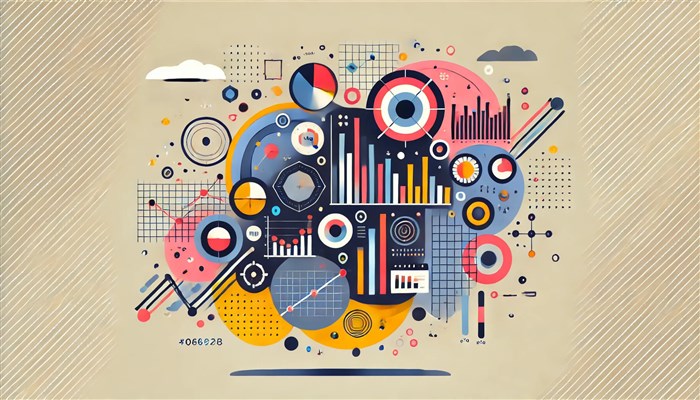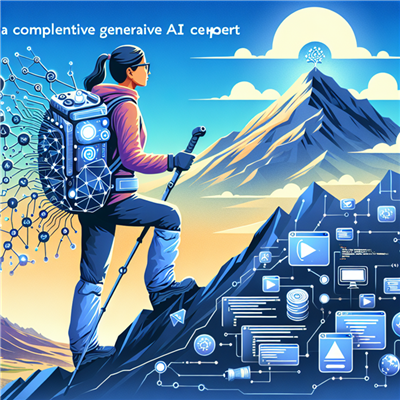
In the era of big data, the ability to interpret and communicate data effectively is a highly sought-after skill. Data Visualization Training is a key component in the development of this skill set. Data visualization is the process of interpreting and graphically representing data, helping to convey complex information in an easy-to-understand format. A Data Visualization Training Course can provide the necessary knowledge and skills to become an expert in this field.
n today’s data-driven world, the ability to present complex data in a simple, understandable, and compelling way is crucial for decision-making. Data storytelling — the process of turning data insights into meaningful narratives — is a powerful tool that can influence strategic decisions, drive business performance, and clarify communication across industries. One of the most effective ways to enhance your data storytelling skills is through data visualization certifications. These certifications not only help you master visualization tools but also focus on improving your ability to transform data into stories that resonate with your audience.
In this blog, we’ll explore the role of data storytelling, the certifications that can boost your skills, and the tools and techniques necessary to become an effective data storyteller.
The Role of Data Storytelling in Presenting Insights Clearly and Effectively
Data storytelling combines data, visuals, and narrative to communicate insights in a way that is understandable, engaging, and actionable. It’s not just about presenting numbers or charts; it’s about using those visuals to tell a story that helps stakeholders grasp key insights and make informed decisions.
Here’s why data storytelling is critical:
1. Simplifies Complex Information
Data, particularly large datasets, can be overwhelming. Data storytelling helps simplify complex datasets by focusing on the most relevant insights and representing them visually. This clarity allows decision-makers to grasp important trends without getting lost in technical jargon or overwhelming spreadsheets.
2. Engages Audiences
People are wired to respond to stories. A well-crafted narrative around data keeps the audience engaged, making them more likely to absorb and act on the insights. Visuals, combined with context and narrative, create a story that sticks with the audience.
3. Provides Context
A chart or graph alone often lacks the context needed to understand what the data means. Storytelling helps frame the data, offering explanations and insights that provide deeper understanding. This context turns raw data into actionable insights.
4. Supports Decision-Making
Business leaders often rely on data to make critical decisions. However, if the data is not presented in a way that is clear and actionable, it can lead to confusion or misinterpretation. Data storytelling bridges this gap by delivering insights in a structured, meaningful way, which can be easily digested and acted upon.
5. Drives Persuasion
In addition to informing, data storytelling can also persuade. By framing data in a compelling narrative, storytellers can influence opinions, drive strategy, and motivate stakeholders to take action.
Certifications That Focus on Improving Your Data Storytelling Skills
Several certifications in data visualization and business intelligence focus on the art and science of data storytelling. These certifications teach you how to effectively present data using leading tools, while also building the narrative skills that make your visualizations impactful.
Here are some of the top certifications that can enhance your data storytelling skills:
1. Tableau Desktop Specialist
Tableau is one of the most widely used data visualization platforms, known for its powerful visualization capabilities and user-friendly interface. The Tableau Desktop Specialist certification focuses on the fundamentals of using Tableau to create visualizations and dashboards. While the certification itself is about mastering Tableau’s features, the skills you acquire enable you to tell more compelling data stories by building dynamic, interactive visualizations that effectively communicate key insights.
2. Microsoft Certified: Data Analyst Associate (Power BI)
Power BI is another leading data visualization tool, and the Microsoft Certified: Data Analyst Associate certification prepares you to use this platform to clean, model, and visualize data. The certification emphasizes designing and building scalable dashboards, which is an essential part of data storytelling. Mastering Power BI allows you to create visual narratives that help stakeholders quickly understand the story behind the numbers.
3. Google Data Analytics Professional Certificate
This entry-level certification by Google covers the fundamentals of data analytics, including data visualization techniques. While the primary focus is on data analysis, the certification also touches on how to present insights using tools like Google Data Studio. It prepares you to turn complex data into clear visual stories, perfect for communicating findings to business users.
4. Qlik Sense Business Analyst Certification
Qlik Sense is a powerful tool for building advanced, interactive data visualizations. The Qlik Sense Business Analyst certification teaches you how to create and manipulate visualizations using Qlik’s data analytics platform. This certification also focuses on how to build effective stories using data visualizations, enabling you to craft visual narratives that highlight key insights and drive business actions.
5. Certified Data Visualization Expert (CDVE)
Offered by the Data Science Council of America (DASCA), the Certified Data Visualization Expert (CDVE) is a certification designed to sharpen your skills in data storytelling. This program focuses on not just the technical aspects of data visualization but also the art of creating compelling narratives. You’ll learn how to craft stories that convey data insights in ways that resonate with different audiences.
Tools and Techniques to Master Data Storytelling Through Visualization Platforms
While obtaining certifications equips you with the credentials, truly mastering data storytelling requires proficiency in various tools and techniques. Below are some of the tools and techniques that can help you elevate your storytelling abilities:
1. Choosing the Right Visualization Tool
Different data visualization tools have their strengths and weaknesses, and the tool you choose will depend on your audience, the complexity of the data, and your personal preference. Platforms like Tableau, Power BI, and Google Data Studio offer a range of features that make it easier to tell data stories, from interactive dashboards to AI-powered insights.
- Tableau is known for its ability to handle large data sets and create interactive visualizations, making it perfect for in-depth storytelling.
- Power BI integrates seamlessly with Microsoft products and is great for creating comprehensive reports.
- Google Data Studio is ideal for creating free, customizable dashboards and reports that can be shared with others.
2. Crafting a Compelling Narrative
The most effective data stories follow a logical flow, much like a traditional story. They have a beginning (setting the context), a middle (exploring the data), and an end (drawing conclusions or providing recommendations). To create an effective narrative:
- Start by understanding your audience and their needs.
- Focus on a clear and specific message that the data supports.
- Build a story that logically flows from one visualization to the next, guiding the viewer toward the key insights.
3. Creating Engaging Visuals
Simply plotting data on a chart isn’t enough. The visual elements you choose — such as color, layout, and type of chart — play a big role in how the audience perceives the data. For instance, bar charts and line graphs are great for comparisons and trends, while scatter plots are ideal for showing correlations.
4. Leveraging Interactivity
Interactive dashboards allow users to explore the data for themselves, leading to a deeper understanding of the insights. Tools like Tableau, Power BI, and Qlik offer interactive features such as drill-downs, filters, and tooltips that allow users to explore different dimensions of the data.
5. Data Cleaning and Preparation
A critical but often overlooked part of data storytelling is ensuring the data is accurate, clean, and relevant. Before diving into visualization, it's essential to clean the data, remove outliers, and ensure that it accurately reflects the insights you want to convey.
6. Designing for Your Audience
Always consider the audience when designing visualizations. Business executives might prefer high-level summaries with clear conclusions, while data scientists may want more detailed visualizations with in-depth data. Tailoring the complexity and style of your visualizations to the audience ensures your story resonates effectively.
Conclusion
Data visualization certifications are a powerful way to enhance your data storytelling skills. By mastering the right tools and techniques, you can turn raw data into compelling narratives that drive decision-making and influence business strategies. Whether you're just starting out or looking to advance your career, certifications like Tableau Desktop Specialist, Microsoft Power BI Data Analyst, and Google Data Analytics Professional Certificate offer the expertise needed to create meaningful visual stories that resonate with audiences. In today’s data-rich environment, those who can tell a compelling story with data are the ones who stand out.
Data visualization is a powerful tool for data storytelling. Whether you're a data analyst, a business manager, or simply a data enthusiast, a data visualization certification can significantly enhance your data storytelling skills. Koenig Solutions offers top-notch training in this domain, helping you to become a certified data visualization expert.







COMMENT